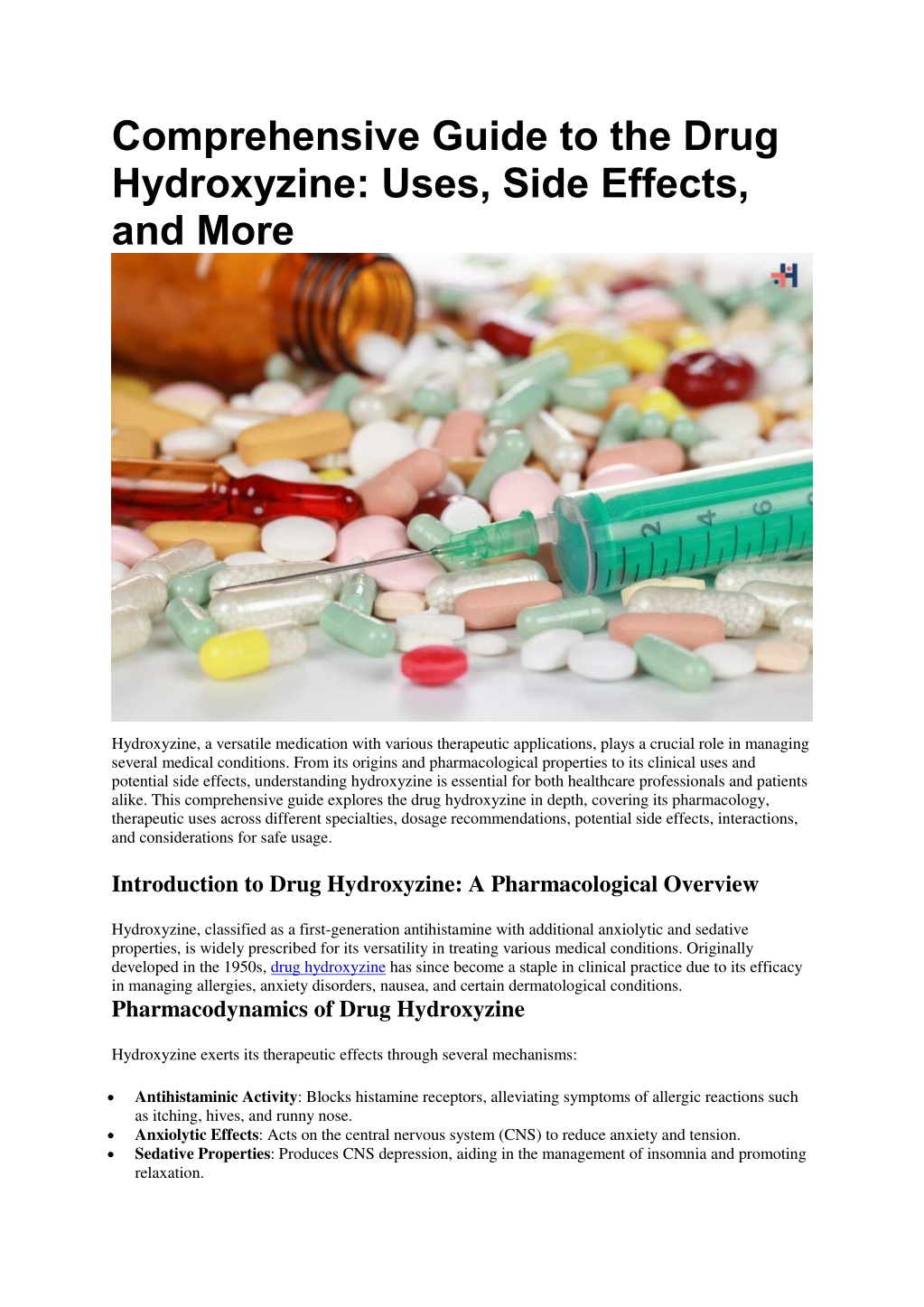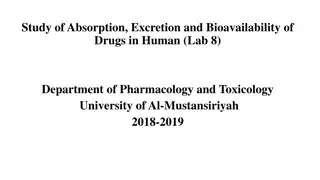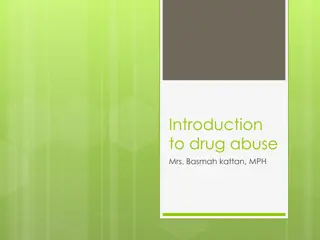
Comprehensive Guide to the Drug Hydroxyzine
This comprehensive guide explores the drug hydroxyzine in depth, covering its pharmacology, therapeutic uses across different specialties, dosage recommendations, potential side effects, interactions, and considerations for safe usage.
Uploaded on | 0 Views
Download Presentation

Please find below an Image/Link to download the presentation.
The content on the website is provided AS IS for your information and personal use only. It may not be sold, licensed, or shared on other websites without obtaining consent from the author. Download presentation by click this link. If you encounter any issues during the download, it is possible that the publisher has removed the file from their server.
E N D
Presentation Transcript
Comprehensive Guide to the Drug Hydroxyzine: Uses, Side Effects, and More Hydroxyzine, a versatile medication with various therapeutic applications, plays a crucial role in managing several medical conditions. From its origins and pharmacological properties to its clinical uses and potential side effects, understanding hydroxyzine is essential for both healthcare professionals and patients alike. This comprehensive guide explores the drug hydroxyzine in depth, covering its pharmacology, therapeutic uses across different specialties, dosage recommendations, potential side effects, interactions, and considerations for safe usage. Introduction to Drug Hydroxyzine: A Pharmacological Overview Hydroxyzine, classified as a first-generation antihistamine with additional anxiolytic and sedative properties, is widely prescribed for its versatility in treating various medical conditions. Originally developed in the 1950s, drug hydroxyzine has since become a staple in clinical practice due to its efficacy in managing allergies, anxiety disorders, nausea, and certain dermatological conditions. Pharmacodynamics of Drug Hydroxyzine Hydroxyzine exerts its therapeutic effects through several mechanisms: Antihistaminic Activity: Blocks histamine receptors, alleviating symptoms of allergic reactions such as itching, hives, and runny nose. Anxiolytic Effects: Acts on the central nervous system (CNS) to reduce anxiety and tension. Sedative Properties: Produces CNS depression, aiding in the management of insomnia and promoting relaxation.
Pharmacokinetics and Metabolism Hydroxyzine is well-absorbed after oral administration, with peak plasma concentrations reached within 2 hours. It undergoes extensive hepatic metabolism, primarily via oxidation and conjugation pathways, before being excreted primarily in the urine as metabolites. The drug has a half-life of approximately 20-25 hours in adults, allowing for once or twice-daily dosing depending on the indication. Therapeutic Uses of Drug Hydroxyzine Hydroxyzine finds application across multiple medical specialties due to its broad spectrum of pharmacological effects. Here are some key therapeutic uses: 1. Allergic Conditions Hydroxyzine is effective in managing: 2. Anxiety Disorders Allergic Rhinitis: Relieves symptoms such as sneezing, itching, and nasal congestion. Urticaria (Hives): Reduces itching and inflammation associated with acute and chronic urticaria. Atopic Dermatitis: Alleviates pruritus and helps manage eczema flare-ups. As an anxiolytic agent, hydroxyzine is prescribed for: 3. Sedation and Insomnia Generalized Anxiety Disorder (GAD): Reduces excessive worry, nervousness, and tension. Panic Disorder: Helps mitigate panic attacks and associated symptoms. Hydroxyzine s sedative properties make it useful for:
4. Nausea and Vomiting Insomnia: Promotes sleep onset and improves sleep quality in patients with difficulty falling asleep. Preoperative Sedation: Facilitates relaxation and reduces anxiety before surgical procedures. Hydroxyzine may be employed to manage nausea and vomiting, particularly in: Dosage Recommendations and Administration Postoperative Settings: Helps control nausea following surgery. Motion Sickness: Alleviates symptoms during travel or movement-induced nausea. Dosage recommendations for drug hydroxyzine vary depending on the condition being treated and the patient s age and medical history. Typical dosages include: Dosages may be adjusted by healthcare providers to achieve optimal therapeutic outcomes while minimizing side effects. Allergic Conditions: 25-100 mg per day in divided doses, adjusted based on response and tolerance. Anxiety Disorders: 50-100 mg per day, divided into 2-4 doses. Insomnia: 50-100 mg at bedtime. Potential Side Effects of Hydroxyzine While generally well-tolerated, drug hydroxyzine may cause side effects, including: Drug Interactions and Contraindications Sedation and Drowsiness: Common with higher doses, impacting alertness and coordination. Dry Mouth: Occurs due to anticholinergic effects. Blurred Vision: Temporary visual disturbances may occur. Gastrointestinal Effects: Nausea, constipation, or gastrointestinal upset. Paradoxical Reactions: Rare instances of increased agitation, confusion, or hallucinations.
Hydroxyzine may interact with other medications, potentiate CNS depression, or affect cardiac function when combined with certain drugs. It is contraindicated in patients with: Considerations for Safe Usage and Monitoring Hypersensitivity: Known allergy to hydroxyzine or cetirizine. Pregnancy and Lactation: Caution advised due to potential risks to the fetus or breastfeeding infant. Severe Liver Disease: Hepatic impairment may necessitate dose adjustments or avoidance. Healthcare providers monitor patients receiving drug hydroxyzine for efficacy, adverse effects, and potential drug interactions. Special precautions include: Emerging Research and Future Directions for Drug Hydroxyzine Geriatric Patients: Increased sensitivity to sedative effects. Pediatric Patients: Use caution and follow age-appropriate dosing guidelines. Renal or Hepatic Impairment: Adjustments in dosage may be necessary. Continuing from our exploration of hydroxyzine s current applications and considerations, ongoing research and emerging trends are shaping the future landscape of this versatile medication. Advances in pharmacology, clinical trials, and innovative approaches are expanding our understanding and potential uses of hydroxyzine, paving the way for enhanced therapeutic outcomes and improved patient care. Investigational Uses and Potential Benefits While hydroxyzine is well-established for its antihistaminic, anxiolytic, and sedative properties, ongoing research is exploring novel indications and potential benefits: Adjunct Therapy in Psychiatric Disorders: Studies are investigating drug hydroxyzine s role as an adjunct to standard treatments for psychiatric disorders such as depression and bipolar disorder, particularly in managing anxiety symptoms and promoting sleep.
Pain Management: Preliminary evidence suggests hydroxyzine may have analgesic properties, potentially benefiting patients with neuropathic pain or as an adjuvant in pain management protocols. Treatment of Pruritus: Beyond its current use in allergic conditions, hydroxyzine s anti-itching effects are being studied for various forms of chronic pruritus, including those associated with dermatological conditions and systemic diseases. Pharmacogenomics and Personalized Medicine Advancements in pharmacogenomics are uncovering genetic variations that influence individual responses to drug hydroxyzine and other medications. Tailoring treatment based on genetic profiles holds promise for optimizing therapeutic efficacy and minimizing adverse effects. Genetic markers related to drug metabolism, receptor sensitivity, and predisposition to side effects are being studied to inform personalized prescribing practices. Formulation Innovations and Delivery Systems Research into new formulations and delivery systems aims to enhance drug hydroxyzine s therapeutic profile: Extended-Release Formulations: Development of sustained-release formulations to prolong therapeutic effects and improve patient adherence, particularly in chronic conditions requiring long- term treatment. Transdermal Delivery: Exploration of transdermal patches or topical formulations for localized symptom relief, potentially reducing systemic side effects associated with oral administration. Mechanistic Insights and Targeted Therapies Advances in understanding drug hydroxyzine s mechanisms of action at the molecular level are guiding the development of targeted therapies:
Neuroimmune Interactions: Exploration of hydroxyzine s interactions with neuroimmune pathways involved in inflammation, stress response, and pain modulation, offering new insights into its therapeutic potential beyond traditional uses. Receptor-Specific Modulation: Investigation into selective modulation of histamine receptors and other CNS targets to optimize therapeutic effects while minimizing sedation and other adverse effects. Clinical Trials and Evidence-Based Practice Ongoing clinical trials are evaluating drug hydroxyzine in various patient populations and clinical scenarios: Pediatric Populations: Assessing safety and efficacy in children and adolescents for indications such as allergic reactions, anxiety disorders, and sleep disturbances. Geriatric Use: Investigating dosing adjustments and safety profiles in elderly patients to mitigate risks of sedation and cognitive impairment. Combination Therapies: Studying hydroxyzine in combination with other medications to enhance treatment outcomes in complex conditions like chronic pain syndromes and psychiatric disorders. Regulatory Considerations and Safety Monitoring As research progresses, regulatory agencies continue to monitor safety profiles and update prescribing guidelines for hydroxyzine. Adherence to evidence-based practices and vigilant monitoring of adverse effects, drug interactions, and long-term outcomes remain essential in clinical practice. Conclusion: Navigating Hydroxyzine in Clinical Practice Drug hydroxyzine remains a valuable therapeutic option across various medical conditions, from allergic reactions to anxiety disorders and insomnia. Its dual role as an antihistamine and anxiolytic, coupled with sedative properties, underscores its versatility in clinical practice. Understanding the pharmacology, therapeutic uses, dosing considerations, potential side effects, and monitoring requirements is essential for healthcare professionals prescribing hydroxyzine and for patients benefiting from its therapeutic effects. From its established roles in allergy management and anxiety disorders to potential uses in pain relief and pruritus treatment, hydroxyzine continues to demonstrate versatility and therapeutic promise.By harnessing pharmacogenomics, advancing formulation technologies, and exploring novel therapeutic targets, researchers and healthcare providers can unlock new potentials for hydroxyzine in personalized medicine and precision healthcare. These efforts not only expand treatment options but also strive towards improving patient outcomes, enhancing quality of life, and addressing unmet medical needs in clinical practice. Find practical solutions to common challenges through our insightful articles on Healthcare 360 Magazine






















